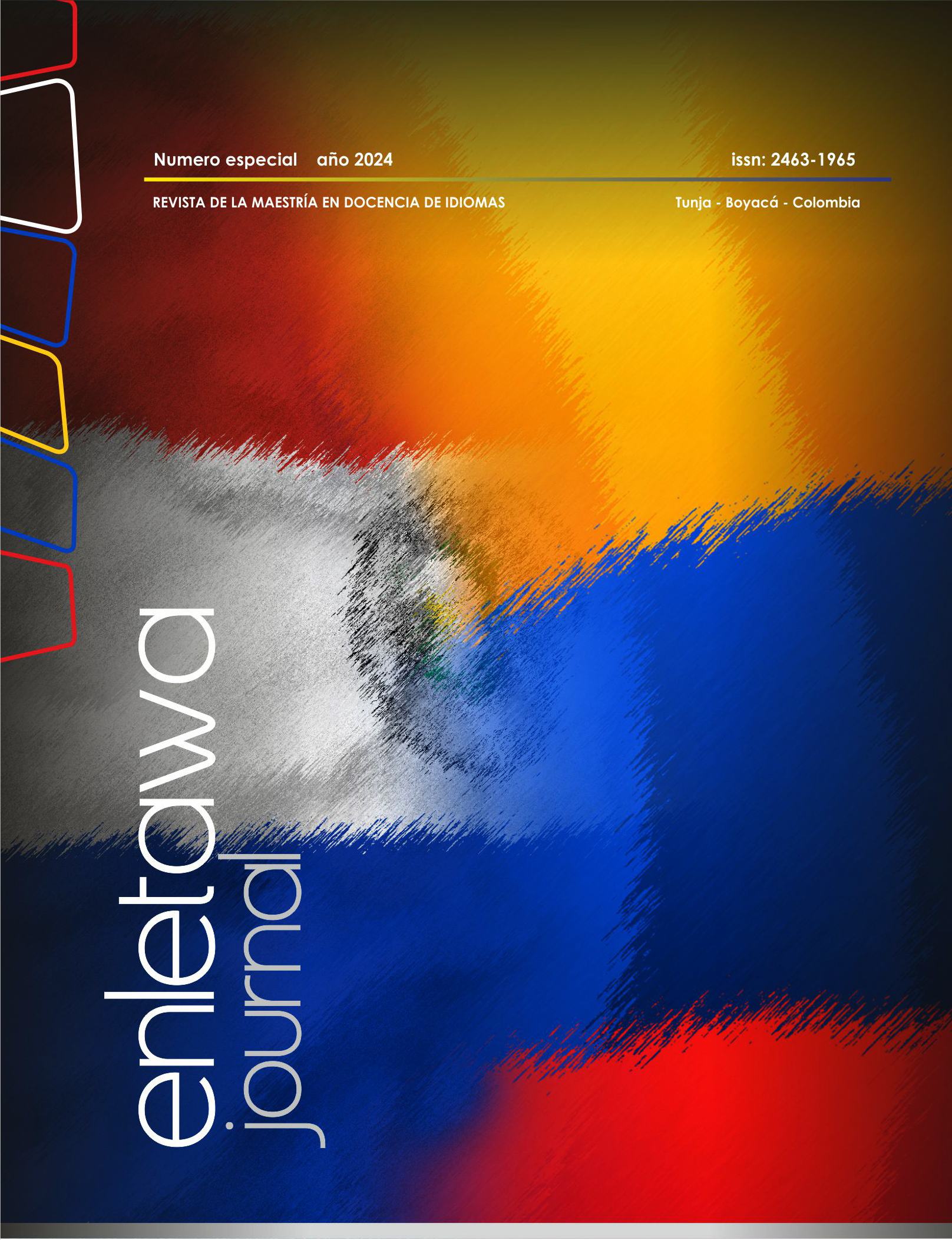Comparative Analysis of Paraguay and Colombia's Educational Language Policy

Abstract
The purpose of this paper is to show the similarities and differences between the educational language policies in Paraguay and Colombia. An exhaustive review of the guidelines proposed by the Ministries of Education of both countries in the linguistic field was carried out in order to make a comparative analysis specifically of the policies related to the bilingualism project. The similarities in both countries relate to the active and participatory methodology in learning, such as equity, planning, focus on student context and diversity, seeking to strengthen the processes of identity, knowledge, socialization and protection of indigenous languages. As for differences, in Paraguay there is a requirement to learn an indigenous language (Guarani) in order to preserve the native language, while in Colombia there is an emphasis on teaching English as a foreign language.
Keywords
language policies, Paraguay, Colombia, Ministry of Education, Guarani, English as a foreign language
References
- Álvarez-Gayou Jurgenson, J. L. (2003). Introducción a la investigación cualitativa. Archivos Hispanoamericanos de Sexología, 9(2), 147-158.
- Aponte Mantilla, M. E. (2022). The National Bilingualism Plan (PNB) and the Challenge of Internationalization in Colombia: Background and Perspectives. Latin American Journal of Content & Language Integrated Learning, 15(2), e1527-e1527.
- Betancourt, B., Zea, K., Bohórquez, L., & Gil, E. (2023). “Reflections on the role of indigenous languages in the context of bilingualism policies in Colombia” Ciencia Latina Internacional, 7(6), 2497-2516.
- Boyer, H. (2010). Les politiques linguistiques. Mots. Les Langages du Politique 94, 67-74.
- Boyer, H. (2019). Identidad etnosociolingüística y política lingüística. A propósito del Paraguay contemporáneo. Glosema. Revista Asturiana de Lingüística 1, 41-51.
- Cárdenas, R. & Miranda, N. (2014). Implementación del Programa Nacional de Bilingüismo en Colombia: un balance intermedio. Educación y Educadores, 17(1), 51-67.
- Carta de comentarios Ministerio de Educación Nacional al Proyecto de Ley número 062 de 2022 Cámara. Gaceta del Congreso, n.° 648, 2023.
- García León, J. & García León, D. (2012). Políticas lingüísticas en Colombia: tensiones entre políticas para lenguas mayoritarias y lenguas minoritarias. Boletín de Filología, 47(2), 47-70.
- Galeano, D. (2019). Soberanía cultural, identidad y lengua guaraní. Ñemitỹrã, 1(1), 19-28.
- Hancock, D. R., Algozzine, B., & Lim, J. H. (2021). Doing Case Study Research: A Practical Guide for Beginning Researchers. ERIC.
- Huffman, T. (2013). Native American Educators' Perceptions on Cultural Identity and Tribal Cultural Education: An Application of Transculturation Theory. Journal of American Indian Education, 52(3), 21-40.
- Matsikoudis, E., & Stergiou, C. (2014). First Draft of the Act Programming Language (Technical report, DTIC Document). California Univ Berkeley Dept of Electrical Engineering and Computer Sciences.
- Ministerio de Salud y Protección Social (2020). Boletines poblacionales: población indígena. https://www.minsalud.gov.co/sites/rid/Lists/BibliotecaDigital/RIDE/DE/PS/boletines-poblacionales-poblacion-indigena.pdf
- Mortimer, K. S. (2016). A Potentially Heteroglossic Policy Becomes Monoglossic in Context: An Ethnographic Analysis of Paraguayan Bilingual Education Policy. Anthropology & Education Quarterly, 47(4), 349-365.
- Ospina Bozzi, A. M. (2015). Mantenimiento y revitalización de lenguas nativas en Colombia. Reflexiones para el camino. Forma y Función, 28(2), 11-48.
- Ovelar de Gorostiaga, N. (2013). La Ley de Lenguas Nº 4251/11 y el uso del guaraní en el ámbito misional del Ministerio Público. Revista Jurídica. Investigación en Ciencias Jurídicas y Sociales, 3 223-240.
- Penner, H. (2020). Gestión glotopolítica del Paraguay: ¿primero normativizar, después normalizar? Revista Caracol, 20, 233-268.
- Ramírez Duarte, C. V. & Redondo Ramírez, A. S. (2014). El bilingüismo en la encrucijada entre la formación profesional y la competitividad un análisis crítico de la política pública sobre la formación bilingüe en Colombia. Tesis. Pontificia Universidad Javeriana.
- Roux, G. & Soler Millán, G. (2024). Unilingualism and Unibilingualism in Colombia. Applied Linguistics, 45(2), 348-363.
- Ruiz Mendoza, K. K. (2024). Reflexiones conceptuales: método comparativo, investigación comparativa en educación ¿ educación o pedagogía comparada? Spanish Journal of Comparative Education/Revista Española de Educación Comparada, 44.
- Secretaría de Políticas Lingüísticas (SPL). (2024). Secretaría de Políticas Lingüísticas apoya acciones para la promoción de la lengua de señas paraguaya. https://spl.gov.py/secretaria-de-politicas-linguisticas-apoya-acciones-para-la-promocion-de-la-lengua-de-senas-paraguaya/
- Thorpe, K., Burgess, C., & Grice, C. (2024, June). Aboriginal Curriculum Enactment: Stirring Teachers into the Practices of Learning from Country in the City. In Living Well in a World Worth Living in for All: Volume 2: Enacting Praxis for a Just and Sustainable Future (pp. 189-208). Springer.
- Verón, M. Á. (2017). Paraguay: Una nación pluricultural con dos lenguas oficiales. e Llengua i Dret, Journal of Language and Law, 67, 106-128.
- Verón, M. Á. (2021). El dolor lingüístico paraguayo. Derechos humanos en Paraguay, Codehupy.
- Zanardi, J. (2013). Lenguas indígenas del Paraguay. Centro Nacional de Innovación e Investigación Educativa (CNIIE).
